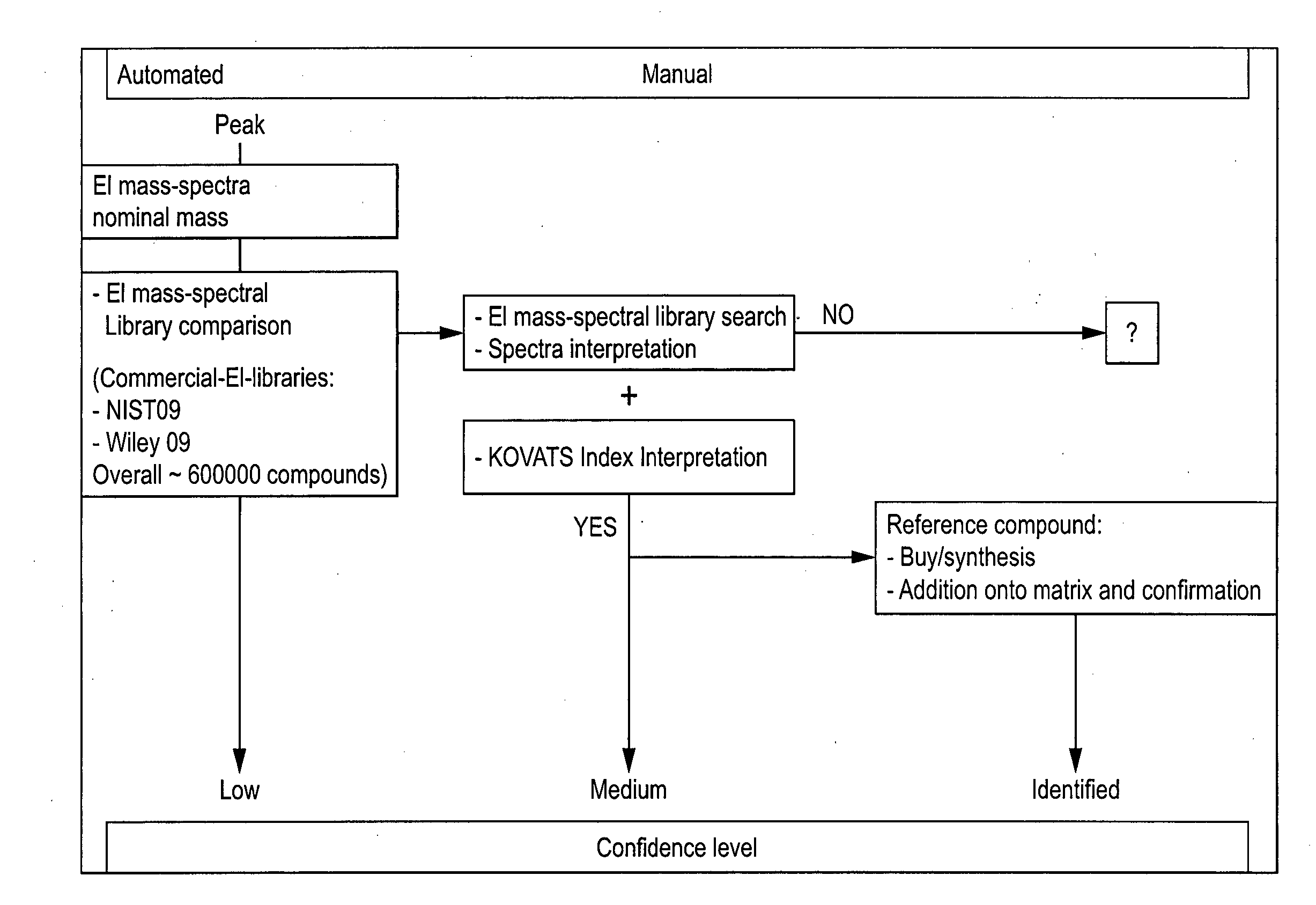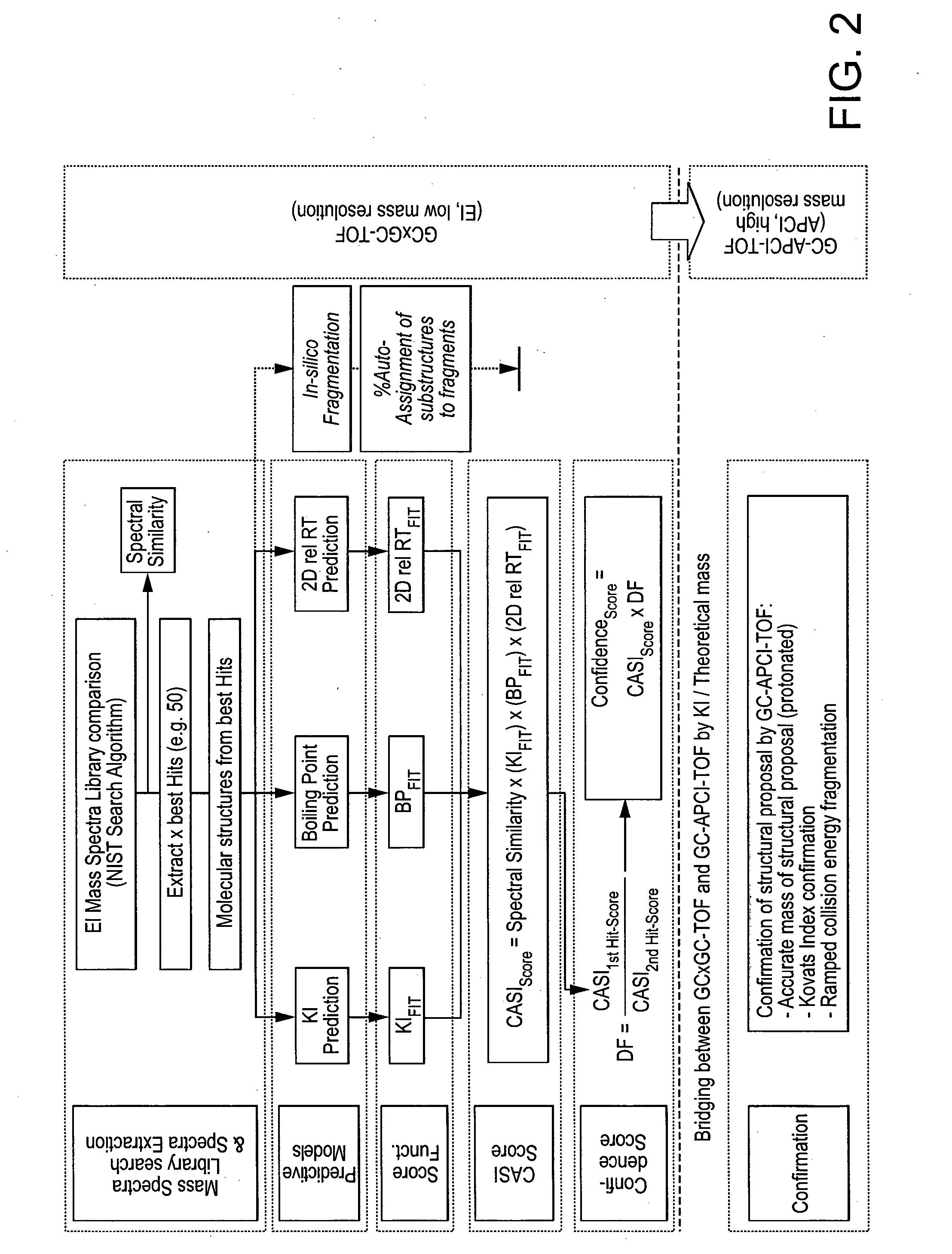Computer-assisted structure identification
- Summary
- Abstract
- Description
- Claims
- Application Information
AI Technical Summary
Benefits of technology
Problems solved by technology
Method used
Image
Examples
example 1
Models for Prediction of Analytical Properties
[0117]All QSPR models for the development of CASI are built under the same principles. Compounds of known structure are split randomly into a training set (in this example, 90 compounds) and a test set (in this example, 35 compounds). In addition, in this example, 35 different compounds are used as a validation set. Without limitation, 50 to 500 compounds can be used for training. Different distribution of compounds between the sets could be chosen for model establishment. Chemical structures represented in computer-readable format are prepared using software known in the art, in this case, Pipeline Pilot 8.0.1 (Accelrys, Inc. San Diego, Calif., USA). During the preparation. salts are stripped from the compounds' structures using a predefined list, largest fragments are kept, bases are deprotonated and acids are protonated, charges of functional groups are standardized, hydrogens are added, canonical tautomers are generated, and 2D coord...
example 2
Instrumentation and Analytical Methods
Data Generation
[0167]The experiments were performed using the LECO GC×GC-TOF system Pegasus IV. Cigarette smoke, collected on glass-fiber filter pads was extracted with an organic solvent and fortified with a mixture of several deuterated internal standard and retention time marker compounds. The cigarette smoke extracts were analyzed directly after liquid-liquid partitioning with dichloromethane / water as well as derivatized raw extract using BSTFA / TMCS by injecting the extracts in cool-on-column mode onto the analytical system. The separation of the complex mixture was performed in the two-dimensional mode using a nonpolar / polar analytical column combination for the first / second dimension chromatography. Helium as carrier gas was kept to a constant flow of 1.0 ml / min. A 30 m DB-5 ms analytical column with an internal diameter of 0.25 mm and film thickness of 0.25 μm was used for the first dimension and a 2.2 m DB-17ht with an internal diameter ...
PUM
 Login to View More
Login to View More Abstract
Description
Claims
Application Information
 Login to View More
Login to View More - R&D
- Intellectual Property
- Life Sciences
- Materials
- Tech Scout
- Unparalleled Data Quality
- Higher Quality Content
- 60% Fewer Hallucinations
Browse by: Latest US Patents, China's latest patents, Technical Efficacy Thesaurus, Application Domain, Technology Topic, Popular Technical Reports.
© 2025 PatSnap. All rights reserved.Legal|Privacy policy|Modern Slavery Act Transparency Statement|Sitemap|About US| Contact US: help@patsnap.com



